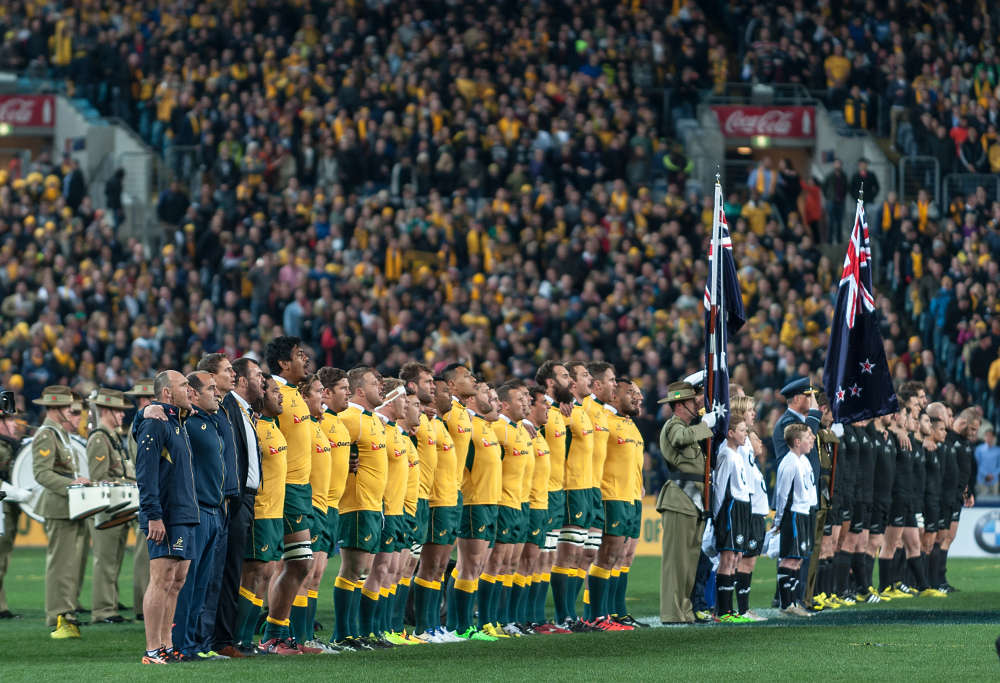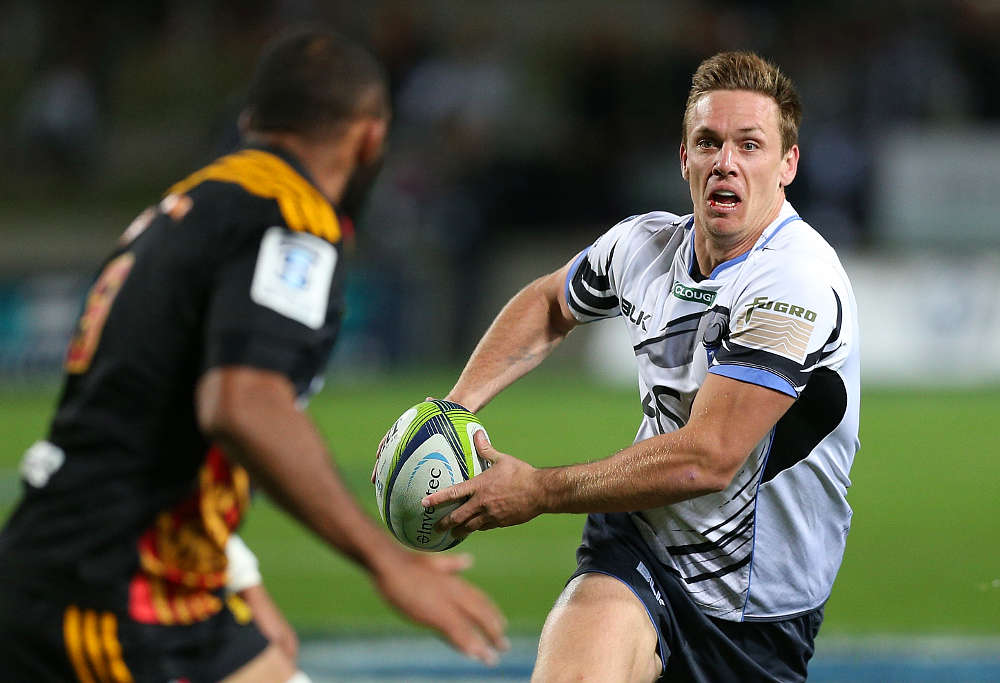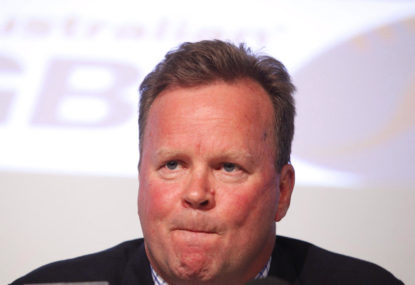Last month I wrote the first of my two-part article on the solution to the shambles that is Australian rugby with hopes that there would be more clarity around which Super Rugby franchise will be cut by the time I released the second part. There hasn’t been.
The ARU went completely back into their shell after their foolhardy statement that they would cut a team within 72 hours of the initial announcement. This statement prompted both the Force and the Rebels to threaten legal action against the ARU, which somehow the ARU didn’t anticipate.
It boggles the mind as to how the ARU thought they would be able to pull off something like that especially seeing as they were ‘in consultation’ with the Victorian Rugby Union (VRU) and Western Australian Rugby union (Rugby WA) throughout the process. Surely they realised that giving both 72 hours to present a case before a decision is made is ludicrous.
This is essentially the entire problem in a nutshell. The ARU tried something without properly thinking it through or talking to the stakeholders, got shot down and then went into hiding while they try to figure out exactly what kind of mess they are in.
Then, just to add salt to the wound, add in the shock announcement that the heir apparent to Bill Pulver’s ARU throne – ARU’s chief operating officer, Rob Clarke – has resigned. Not a pretty picture.
But despite the continued lack of clarity and action, I give you the final points of my solution.
Don’t abandon Victorian or Western Australian Rugby
Whichever franchise is to walk the plank after this ridiculous culling should not be abandoned by the ARU. Both the VRU and Rugby WA have invested significant time and money into the game in their individual states.
If the ARU is serious about keeping their national footprint and developing the game then support needs to continue for both the VRU and Rugby WA. This can be done through two major ways: money and support.
First of all, investment in the club competitions and NRC teams needs to grow. As I touched on in my last article, grassroots funding is key to the future of rugby in Australia and just because a state doesn’t have a Super Rugby franchise doesn’t mean monetary support for its club and representative football should stop. On the contrary, it should increase.
Local club competitions are the heart of rugby in Australia and when you strip a franchise from a state, this will become the main way for fans to engage and support the sport.
Growing either the Dewar Shield in Victoria or Premier Grade in Western Australia will be critical in maintaining valuable rugby pathways for young players. The clubs in these competitions have the potential to unearth some wonderful talent and have already started doing so for Western Australia especially.

(Photo Credit Sporotgraphy)
In addition to increasing the funding to clubs, the ARU should also champion the NRC. Watching the NRC last year was great, it highlights a few things about Australian rugby.
It shows there is indeed a lot of talent in Australia that is itching to step up into full professional contracts but at the same time, it also shows that there is a long way to go, particularly in terms of skill level.
This is not helped by the NRC being a testing ground for every ridiculous rugby law that administrators could dream up. Don’t change the rules of the game and expect people to connect with it; rugby is confusing enough without different point and penalty systems for different tiers.
Without a Super Rugby franchise, the state’s NRC team will be the premier provincial team. Build this competition as a legitimate rugby pathway to higher honours and hopefully some of the talent inevitably lost by the removal of a franchise is offset.
Another thing that can be done without any immediate financial commitment from the ARU is just to simply give their full support the state who has their Super team cut.
Further to that, the ARU should go into bat for the discontinued franchise in the future. Once Super Rugby is back on track financially and in terms of its overall playing standard (particularly from Australian and South African teams), the ARU should say they intend to push for the reinstatement of the cut franchise once expansion talks are back on the table.
The loss of a franchise now doesn’t mean that at some point (probably 5-10 years away) they can’t come back into the competition, this time hopefully with a much better financial plan.
Additional support can be given by choosing a surrogate Super Rugby franchise for the culled state. If it is Victoria, then the Brumbies are their surrogate and if it is Western Australia then Queensland is their surrogate.
What this means is that two games a year are played in the other state, giving locals a chance to still go to a Super Rugby game even without a state franchise.
Finally, the ARU must ensure Wallabies games continue to be held in the state of the axed franchise. The Wallabies are the diamond in the crown of Australian Rugby and every kid playing rugby in this country dreams of wearing the green and gold.
If a Super Rugby team is dropped, this dream does not change; the ARU must ensure that the state that has lost a franchise gets Wallabies games.
The Wallaby brand and spectacle of Test rugby is the best product the ARU has. In order to not lose too much in the Super Rugby cull, this needs to be front and centre for supporters in either Western Australia or Victoria.

(Photo: Tim Anger)
Manage player transitions properly
Once the decision has been passed down on which franchise will act as Australia’s sacrificial lamb at the alter of Super Rugby, the ARU must be clear and concise with players on their future direction.
Ben Whittaker, the ARU’s high-performance boss, has been tasked with the not so easy task of transitioning axed Super Rugby players. For the players on the fringes, this wait to find out their future must be excruciating.
Let’s not forget these players all have families to support as well as future ambitions. To work for years to get into a Super Rugby franchise and then have it swiftly taken away from you is heartbreaking. My thoughts really go out to these players, particularly the fringe ones, who may never get a chance to play professional rugby at this level again.
On top of this, consider the young players who are in line to step up to Super Rugby next year who will have their potential playing squad position taken by a lost soul from an axed franchise. It’s going to be a tough 2018 for these players.
Australian Super Rugby’s natural attrition rate is currently 15 per cent, which is equivalent to 26 players a year. With the loss of one franchise, that will mean there should be about 21 open spots on continuing franchises for players to fill.
The main stars will have no trouble getting a spot with people like Dane Haylett-Petty and Jack Debreczeni being easy fits into other franchises but it is the fringe players who will suffer.

(AAP Image/ David Rowland)
Right now what do you do as a fringe player? Look overseas? Look within Australia? Both pretty hard to do when you are still not even sure your franchise will be the chosen one.
There has been a suggestion that the salary cap could potentially be raised for a year to allow for extra players to join the other franchises. I don’t really see this happening if the ARU is all about cutting franchise costs.
Additionally, this just shifts the problem out another year. The best thing the ARU can do is make a decision and wear the consequences. Once that decision is made, ensure the main talents are kept within Australia and those that are on the fringes are given support in finding their next team whether it be in Australia, overseas or indeed out of professional rugby altogether.
New board and leadership
The current ARUs leadership has to go. The handling of the Super Rugby franchises in this troubling time has been poor at best and the decisions up until this point have been misinformed.
While I don’t doubt Bill Pulver and the ARU board’s commitment and passion to getting rugby out of its most troubling period in recent history, I do now doubt their ability.
The track record is not good: agreeing to unwarranted Super Rugby expansion, financial mismanagement and the forced axing of one of their own much-spruiked franchises have left a large scar in the heart of all Australian rugby fans and, just like the coaches of Super Rugby, the leadership of the ARU should be held to account.
Rob Clarke’s sudden resignation gives an insight into the how bad the leadership has been. When the next in line to the grandest office at ARU headquarters unexpectedly runs for the hills, at the ARU’s most troubling time no less, it is clear there is a problem.
Bill Pulver should continue on until this Super mess is sorted and then announce his planned resignation at the end of the year. After this announcement, a full-scale search for the best replacement should be conducted, which should include looking both inside and outside of the current board.

(AP Photo/Rick Rycroft)
The board itself also needs some fresh faces and ideas. If you look at the board, it’s a bit of a mish-mash of former rugby players and financial executives. It doesn’t ooze the sense of innovation which right now is what is needed.
A change of leadership, at least in some places, would give fans cause for hope that this next chapter in Australian rugby history will be a brighter one.
Conclusion – swings and roundabouts
The solution to Australia’s rugby woes is not a quick or easy fix. It is a complex and dynamic environment with some unique challenges. No one in Australia should be thinking that success will happen overnight. It will take the concerted and sustained effort of Australian rugby fans, coaches, players and administrators at all levels to achieve success.
This effort, coupled with common sense reforms, a clear strategic plan and the funding to back it up, could revive rugby in the Australian sporting landscape. Make no mistake about the stakes of this game, the next five years will decide the fate of rugby as a whole in Australia.
Don’t fret, though. It is always darkest before the dawn and the only way from rock bottom, which is where we now find ourselves, is up.
With the June Test matches around the corner along with the run-in to the Super Rugby finals, maybe we will start seeing some semblance of positivity return to Australian rugby.
After all, being a die-hard fan means that you ride the roller-coaster of emotions through the darkest patches because that makes the light seem all the more brighter.

































































































